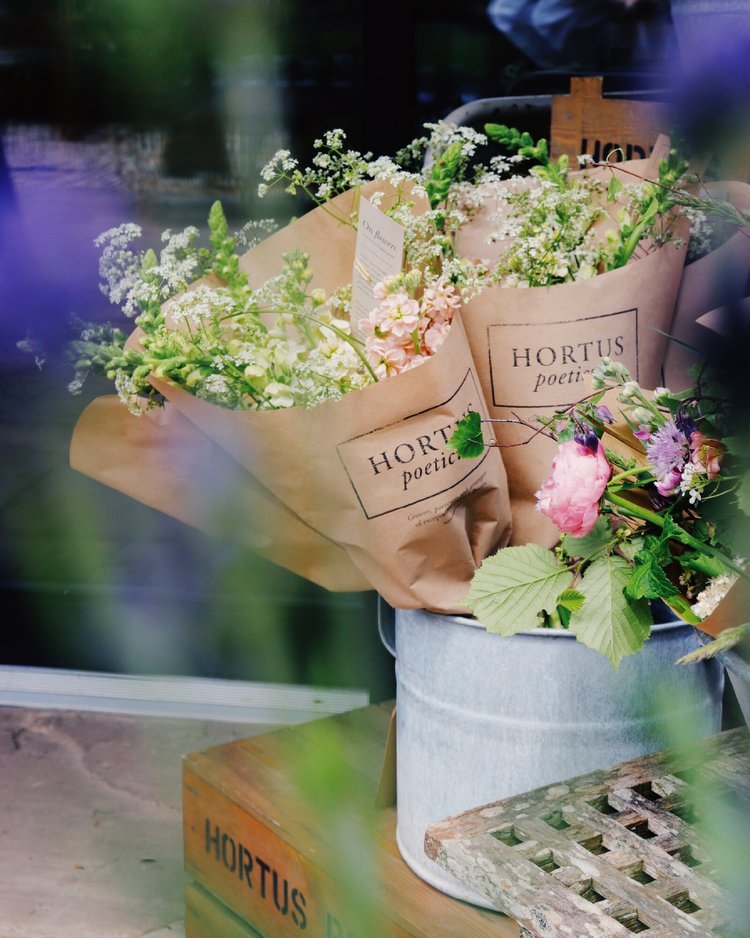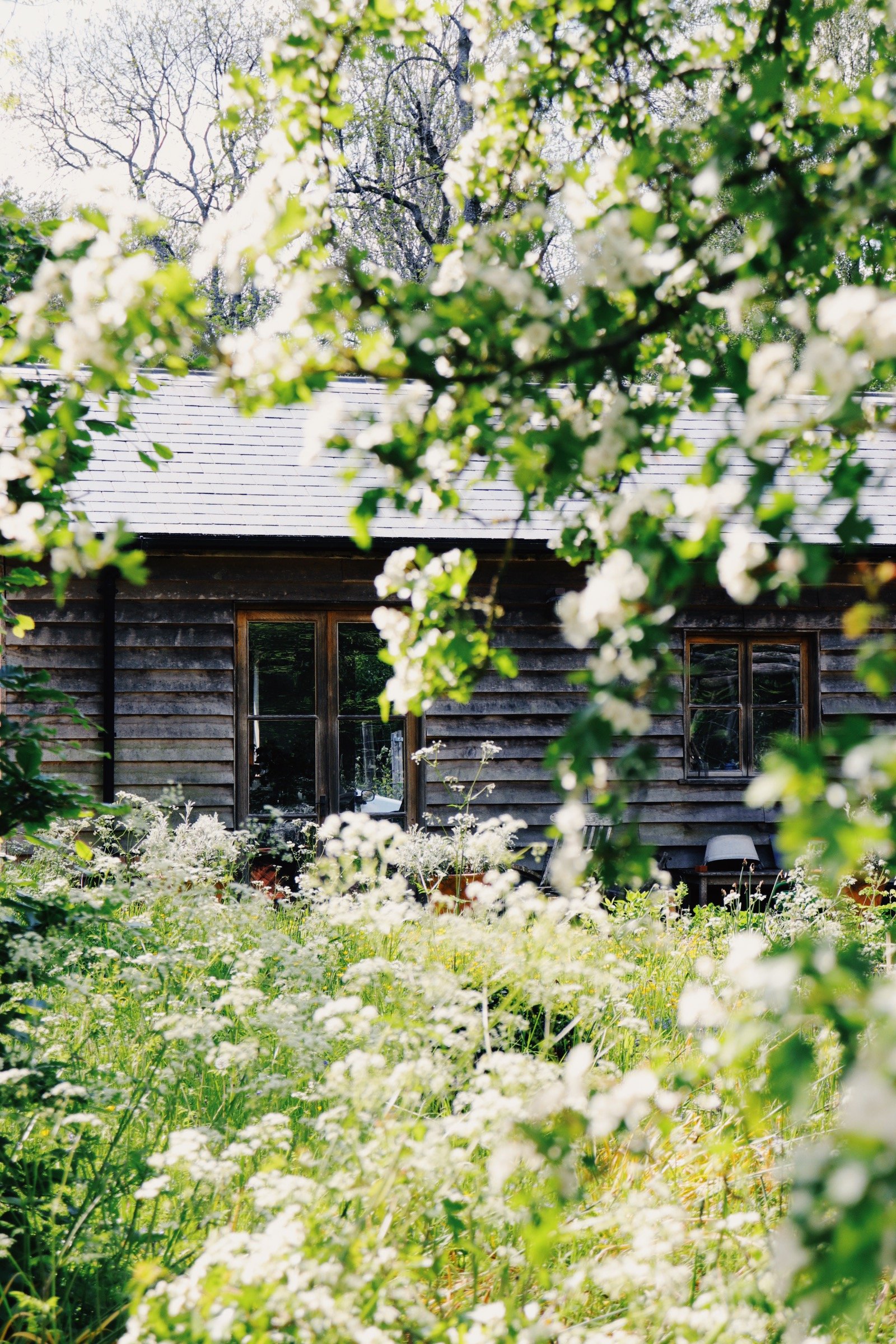Song of the Earth
A key part of the HP story and one that has given us much pleasure, has been all the work we did to identify and articulate our brand. Who and what were we, and who did we want to be? What business did we want to create, and for whom? Where was our joy, and how did we want to share it ? All these questions and more, needed thinking about, exploring, testing, articulating, to create our brand. This is the story of how we did it.
Getting Started
Firstly the name; many comment on our name and ask where it came from and why. Many love it, others think it a bit of a mouthful; neither are incorrect.
Long before the idea of being a cut flower grower was even the seed of an idea, I had always associated flowers with Latin, as Latin is the language of Botany and the international language of plants. If you know the Latin name of a plant you can ask for it in any country and stand a good chance of getting what you asked for. Use the familiar name and all becomes a bit approximate. And although daunting at first, after a while the Latin names roll around the tongue quite deliciously and become part of that lovely feeling of knowledge and intimacy. If you love something, learning about it is not a chore, instead it is part of the charm and the fascination. Latin names tell not only the name of the species, but often describe its visual characteristics or its history - both fresh layers of interest and pleasure. So a Latin name it was going to be.
Those who follow us, or have landed on our website, know that our relationship with flowers is both painterly and poetic. We always see colour and form, but also character and personality, all of which take us pretty quickly into the land of story telling, narrative, fairy tales and art. So a name that tried to compress into a short handle, this sense of wonder and transportation into the non-every day, emerged slowly but firmly to the surface, not unlike a spear of fresh green growth. Hortus Poeticus it was; the poetry of the garden. The cap fitted and was put on.
Every story needs a brand to tell that story in images, strap-lines, visuals and graphics. Fortunately a while earlier, Green and Gorgeous (a wonderful grower and teacher) had written a great piece on how they updated their brand and had referred to Fiona Humberstone and her books as very helpful. I bought “How to Style Your Brand” and “Brand Brilliance” and set myself some serious homework over the winter working through them. That time was a valuable investment as it provoked real thought about key questions. Most business spaces are crowded so we all need to find our own voice; as Erin of Floret, the legendary US flower farm, rightly, says ‘there is room for everyone’, but we all need to figure out who we are and what we want to be. None of us are, or should want to be, someone else.
Doing the preliminary groundwork myself also underlined the fact that was as far as I could take it and real expertise was needed to carry thoughts of a brand forward. Also, once I knew that Fi was joining HP in January 2021, I decided to wait until we could work on it together and it could gain the benefit of input from both of us. Happily, at about the same time, wise and perceptive Jane of Long Barn, Alresford, had put me in touch with Laura of Laura Brown Studio who is responsible for their brand and marketing. We all met and our chemistry was instantaneous; Fi and I loved her depth and breath of interest - and of reference - and her bold conversation. We had found a brand designer we wanted to work with and whom we trusted to help us articulate our story.
There followed some intensive sessions of discussing and exploring the nature of HP with Laura coming back with ideas, mood boards and challenges for us. Like all the best brand designers Laura took our ideas and made us dig deeper in the what and the why. It was stimulating and fun - and hard work.
Fi, Laura and I soon realised that there were a number of key threads, that we wanted a brand that grounded what we do with where it all starts and ends for us; with land and landscape, soil and earth, here deep in the South Downs National Park, overlooking the ancient site of Old Winchester Hill. We also felt strongly that flowers, decorative as they are, aren’t just decoration, or worse a means of showing off, but have characters and personalities that need honouring; also that we talk and respond to them in a certain way and that we wanted that to shine through in our brand too.
Our reference to the ‘painterly and the poetic’ was also in our DNA, through Fi’s love of detail and texture and powers of close observation and from my long hours devouring art, colour and decoration all my life. We began to realise that you bring yourself with you when creating a brand, all our history and backstories are there too. Important as a key thread also, was a love of words and expression and the pleasure of trying to articulate ideas and thoughts through the medium of language.
Slowly all our work came together and Laura went off to interpret them through graphic design. Materials were also important as everything used had to be sympathetic to the threads we had identified and as environmentally friendly as we could sensibly make it - paper, card, ink, tape, wrap.
Laura, with her great contacts book, passion for the right materials to express a design concept, and her strong understanding of the importance of a coherent approach, was tireless in winkling out fabulous and fitting suppliers for us. When she came back to show us her proposal we realised just how clever is top class brand design and talented Laura.
What we learnt ;
Choose the right time to really work on your brand - that may not be right at the very beginning, (do you know enough to make the right choices), but follow your instincts, it doesn’t want to be too late either.
Invest in some good thought and enquiry provoking materials and give yourself time and space to work through them; we found the Fiona Humberstone books very helpful;
Search about for a good designer for YOU; we are all different and you need to really believe in the talent and integrity of your choice; do they have their own ideas or just ‘lift’ other people’s (a depressing concern in the graphic design world)?
Check that they are interested in helping you to explore and then develop and articulate your own brand and not just impose their ideas on you, often from a weaker knowledge base of your sector and business.
Check that they express their ideas clearly, and then listen to you express yours and that they will allow you to disagree and challenge them too.
Recognise that good brand creation costs money - as it should - and that you need to pay for expertise, depth of knowledge and original ideas. Hence make sure you pick the right time to embark upon such an important project.

























